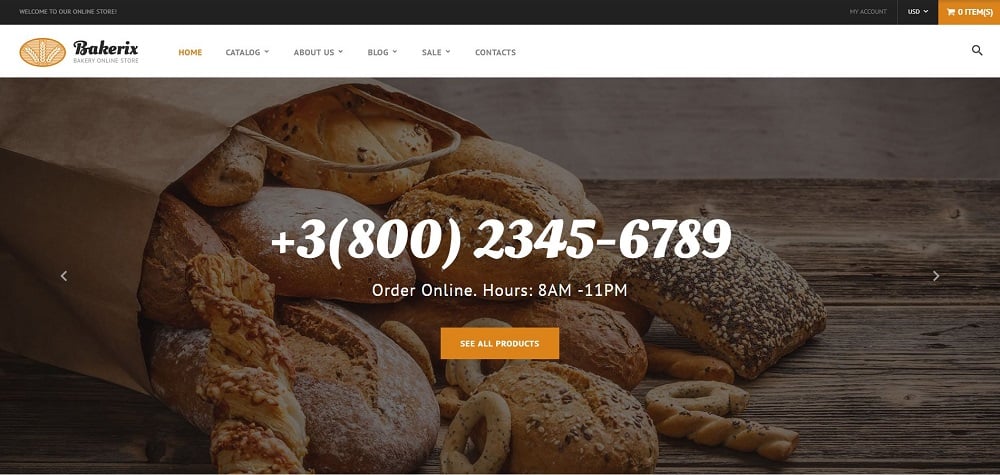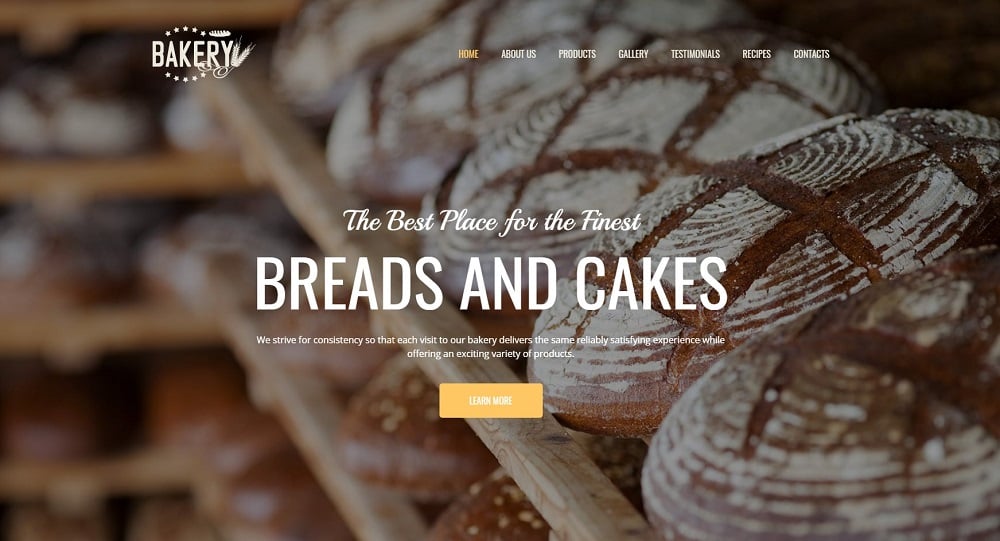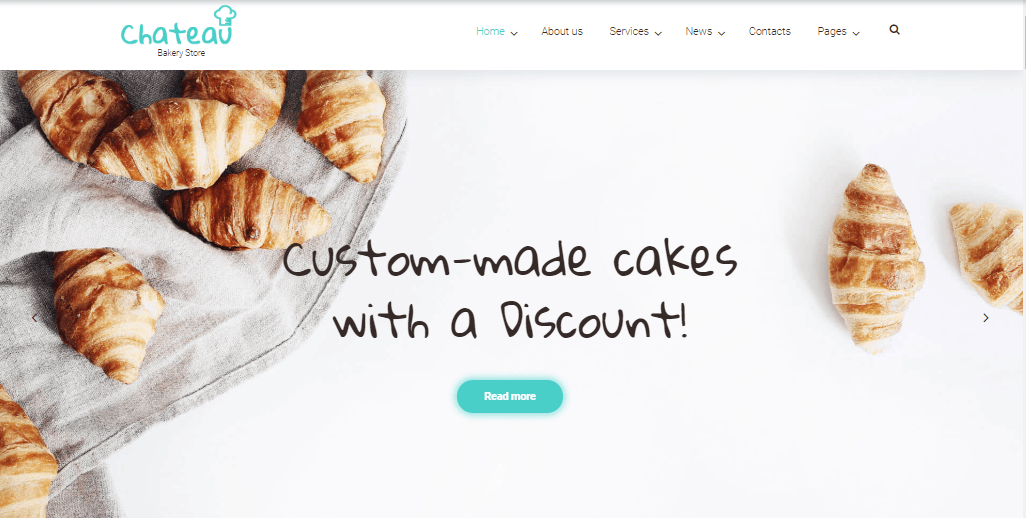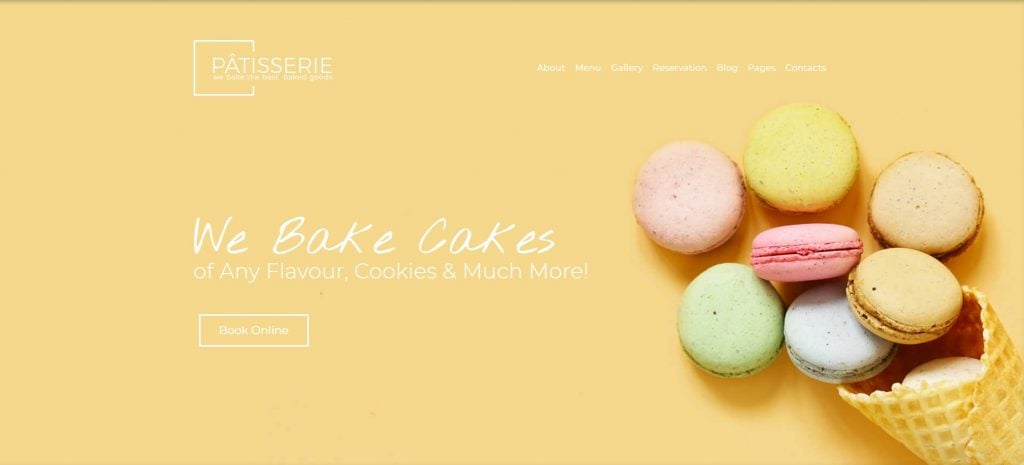How to Start a Bakery: The Ultimate Guide for Bakers
"Bread is a staff of life"... and a potentially perspective mean of earning money!
Did you know that according to First Research, there exist about 3,000 independent bakeries in the USA that see annual revenue of $30 million and 6,000 retail bakeries that bring an additional $3 billion? Yes, all this money is earnt from baking fresh, fragrant, warm bread with a crispy crust on it and sweet buns with delicate filling. Not to say, most of the bakeries are also specialized in selling desserts, like cakes, pies, cookies and sweet rolls that we can never resist.
Bread and pastry products seem to be in high demand always. Bakeries and confectionery business are blooming, and this tendency will only continue growing. So, if you ask whether today is too late to open a bakery, it’s never too late!
If you are an amateur baker, then opening a bakery can be your lifetime dream. Indeed, this is not purely a business but rather a place where baking bread and desserts turns into an art. Since there are many competitors in the industry, winning the game will be super hard. This requires not only your excellent baking skills and phantasy but also a responsible approach to your business organization and competence in solving marketing issues.
Here are the main pros and cons of having your own bakery business, which you should also take into consideration.
Pros
- High demand for bread and pastry products;
- You can quickly create a loyal customer base;
- You can open a profitable small oven bakery both in a small town or a large city;
- Easier to arrange sales of products through grocery stores;
- Even in times of crisis, this business can bring a pretty good income.
Cons
- Low profitability of the primary product (bread). You’ll need to work for a constant sales increase. The markup for bread is only about 15% - 20%;
- Bakery and pastries have super small preservation terms;
- Strict health and safety requirements;
- High competition.
Still eager to start a bakery?
TemplateMonster saved you a few tips on how to start a baking business from scratch and turn one into a thriving business revenue machine.
Let’s go!

Part 1: Planning your Bakery
1. Decide With Your Type
There are so many types of bakeries to choose from. Your decision will depend directly on your talents, starting capital and, of course, your business goals. Although, do not forget about other factors like current national trends in the baking industry and your location. The most common types of bakeries are:
Online Bakeries
This is precisely how to start a bakery business from home. A progressive world is moving further than you think. Some bakeries don’t own a storefront anymore. What they do is they open a killer website, post their works in the gallery, place an ordering form, share contacts and wait for the client’s callback.
In this case, the costs of opening an online bakery business are minimal, and one of those expenses is creating an attractively-looking website. This personal sales platform is as important as building a cozy interior for a typical bakery. Use our best bakery business templates to create a fully-responsive and a trendy website to sell baked goods from home will even more effectively. These are some of TemplateMonster bakery website themes.
Bakery Responsive Shopify Theme

Bakery Premium Moto CMS 3 Template

Bakery Responsive Moto CMS 3 Template

Counter Service Bakeries
Those imply a traditional type of bakery where customers walk towards the counter and are served by the staff. They say what kind of bread and baked goods they want to buy, the staff wraps the goop, and finally, the pays. Quick service - nothing extra!
Specialty Service Bakeries
These bakeries don’t just make random goods for retail but rather specialize in certain types of desserts and pastries. Most of those goods are already pre-ordered by customers, in most cases, for specific occasions like wedding, birthday or other celebrations. Bakers complete the clients’ orders for a certain day negotiated with the one beforehand. This type of service is universal: you can sell pre-ordered baked goods from home or rent a space where you’ll have a team of hard-working bakers and pastry chefs.
Sit Down Bakeries
The sit-down version of the bakery is an excellent way to attract more hungry customers and earn more profit by offering them to dine inside. It’s likely that such bakeries would have menus and table service. Of course, the menu would include at least hot beverages along baked goods and pastries, but many of them go with a more elaborate menu with main courses and appetizers.
2. Decide What Baked Goods You’ll Sell
Bread production is a "whimsical" business. Tastes differ, and unfortunately, you cannot please every person in the world with your products. It’s just impossible to bake everything that’s considered “baked goods”: someone eats only wheat bread, others prefer rye; someone likes sweet buns, others are on a diet. Don’t forget there are thousands of gluten intolerant people and those allergic to eggs. Rolls, buns, pies, bread loaves, cakes, cheesecakes, tarts - choose the goods that you cook better than your competitors do.
Oh, here’s another trick: research the competitor’s range of products and make sure you have a broader choice of tasty things to choose from. This will help you stay ahead, well, at least till the time your competitors do the same =) See how harsh this business is?
Unfortunately, if you are planning to do a home bakery business or organize a mini-bakery, implementing your menu with plenty of items consumes effort and resources. Perhaps, it’s better to concentrate on specific unique items and diversify baked goods with fillings and decorations.
3. Purchase the Necessary Supplies
When it comes to your production, almost everything will depend on the quality of your equipment - starting from the energy expenses and the working speed and finishing with the high-quality and complex employee training.
Bakery Equipment List
Basic supplies
- Flour Sifter
- Mixer operator
- Dough roller
- Dough Divider
- Proving cabinet
- Finally, the major element of every bakery - an oven (electric, gas, diesel, wooden)
Optional equipment
- All kinds of pans
- Baking trays
- Baking racks
- Counters
- Refrigerators for dough and other ingredients;
- Storage cabinets
- Washing equipment
- Climatic equipment
4. Write Your Business Plan
A business plan is essential for every entrepreneur, including those starting a bakery business. Once you outline a plan, it will help you assess the overall business situation, set certain goals, examine competitors and of course decide on your startup funds.
- Define your business. What products and services are you going to provide and what audience is your target (busy employees, mothers and their children, gourmet lovers, etc.)?
- Determine the approximate profits for the first few years of your business. Perhaps, you want to expand your bakery, add a new location or supplement your products? Write it down.
- Outline how you are going to generate revenue. Calculate how much it costs you to produce goods and for how much you are going to sell them to customers. Surprisingly but the best markup of almost 500% belongs to coffee compared to 15-20% for bread.
- Calculate costs before making a profit. This is when you’ll need to survive with only what you have.
- Calculate the overall expenses for your location, supplies, labor, and marketing (like opening a website and ads). If you ever asked a question: “How much does it cost to start a bakery?”, Entrepreneur knows the precise answer. According to the source, the cost of opening a bakery vary from $10,000 to $50,000. Finally, review your business plan with an accountant that might give some good advice regarding your tax returns.
5. Find a Space
Skip this paragraph if you are starting a baking business from home. In other cases, read attentively because finding a physical space for your future bakery shop or cafe means choosing between thousands of options or, on the contrary, lacking a good choice at all.
Some bakers decide to rent a bigger kitchen without an actual public room. This way, you’ll minimize costs for renting big space and interior design but at the same time limit yourself to get more revenue from additional services.
Whatever decision you are going to make, make sure you research. You shouldn’t stop on the first area you liked - better to look around for more options, compare prices and learn what other neighboring business owners have to say.
It doesn’t matter if you are starting a bakery business in a small town and or in a megacity, your primary criterion for finding a spot should be a place with a constant flow of people. At last, do not forget about safety requirements your future space has to correspond to. They vary from state by state, but some are universal like, for instance, obtaining a Health Department Licensing.
6. Register Your Business
Ugh…papers are the most unpleasant part of owning a bakery, and it all starts at the preparation stage. You have to register your business officially, and this takes a lot of patience, perseverance, and desire. This implies getting a business license, tax identification number, sales and a food-handling permit and liability insurance. Some states or area require a separate license for a wholesale or retail baking business.
Part 2: Opening a Bakery
7. Purchase and Install the Missing Equipment
There is still much to be purchased from suppliers for your future bakeries besides major baking equipment. Consider supplementing your baking equipment list with:
- Tables, chairs in case you opted for a sit-down bakery. For one, you’ll also need plates, cups, cutlery and other utensils;
- Cash register, counter, display refrigerators for desserts, telephone, fax machine and other office equipment to manage your business;
- Items needed to serve customers at the bakery counter, like coffee cups, napkins, boxes, plastic containers, zip locks, etc.;
- If you are planning to deliver products directly to your customers’ destination, you might need a vehicle, portable refrigerators, and warming packages.
8. Employ Your Crew
The standard bakery crew consists of:
- bakery technologist;
- assistant baker;
- Pastry man (optional);
- Laboratory assistant;
- Bakery equipment repair technician;
- Salesmen (optional);
- Delivery men (optional);
- Waiters (optional);
- Barista (optional);
- Cleaner.
The number of people needed for each position would depend on the expected sales volumes. The most important person in the bakery kitchen is a technologist. He sets the quality standards, determines how much of all primary products to purchase and how much of a finished product should be released. Also, he may partially affect the product range of the bakery.
The rest of the working staff may equal up to 5-6 people for a small bakery provided the place has no table service. Although, this number doesn’t include an accountant and a production manager. Some bakeries would outsource accounting services, while some prefer to have their own accountant. For bakeries with a small turnover, it's more profitable to hire someone who will make regular reports, but his or her permanent presence at work is optional.
9. Purchase Baking Ingredients
Baking is a product with a sell-by period of only a few hours. Most of the ingredients required for baking are super perishable goods. Thus, one must purchase them right before its opening. Just make sure you negotiate the delivery with suppliers in advance. It is best to find suppliers who will deliver the ingredients themselves on a deferred payment basis.
To avoid huge expenses on product transportation and respectively keep your final products’ cost lower, search for suppliers in your area.
The basic set of ingredients includes:
- flour;
- sugar;
- yeast;
- eggs;
- butter and vegetable oil:
- salt;
- vanillin;
- stabilizers, disintegrants, soda.
This list is most likely to be supplemented with additional ingredients during the production process. It would be perfect to find a wholesaler to provide you with all products at the same time.
Here are precise numbers of how much of these baking things you’ll need to produce 1 ton of freshly baked goods:
- approximately 1,550 lbs (700 kg) of flour;
- about 22 lbs (10 kg) of salt;
- about 660 lbs (300 kg) of sugar;
- 15.5 lbs (7 kg) of yeast;
- 50 oz (1.5 L) of sunflower oil.
If you have recipes to cook from, it will be easier to calculate the required amounts of ingredients needed per day/week or even month. Whether you are starting a bakery from home or opening a more traditional version of one, don’t think as if you are going to have a continuous flow of visitors. All calculations are based on 100 people. If there are more, well done! But taking 100 people as a basis makes it easier to calculate the number of a produced product and the expected profit.
10. Promote!
You can be an excellent professional baking super delicious pastries and bread, but none of it matters if nobody knows about you. Start promoting your business at least a month before the official opening to make your potential customers want to visit your bakery as soon it’s opened.
Have access to shop windows or windows facing crowded streets? Then, hang posters about your upcoming opening! Place an ad in your local newspaper, hand on flyers and ask your friends to spread the word.
Along with the traditional promotion strategies, use social networks, keep a blog and start your own website! Didn’t you forget that TemplateMonster provides outstanding bakery WordPress themes like this one below?
Patisserie - Cakery Responsive WordPress Theme

It doesn’t matter if one hasn’t been launched yet - at least, you’ll tell people what you are about to offer, where you’ll be located and when a grand opening will be. Herewith, to stay active on social media, share some backstage moments. The audience is likely to know your current successes!
Finally, build good relationships with the other businesses in your locality. Typically, even business counterparts tend to promote each other in their own establishments because they have the same potential clientele.
11. Focus on Customers
Last but not least - treat your customers well enough for them to come back! Returning customers mean you won their loyalty. In times of social media, the information spreads as instantly as disappears. Make customers experience memorable, and you’ll be rewarded with excellent feedback on social media and among their connections.
Resume
So, what do you think about bakery startups now? You already know that running your own bakery business has both pros (substantial starting capital, low markup, high competition) and cons (constant demand, high profitability, easier to earn customer loyalty). The main thing is to create a high-quality offer, and you will surely win your own spot in this market.
The average payback period of a bakery ranges from 1 to 1,5 years, although selling cakes from home will reduce your startup costs in times, so the payback period becomes way shorter.
The profitability of bakeries only selling bread and other baking goods doesn’t usually exceed more than 20%, and the payback period can last for 2-3 years. Coffee and drink sales and table service reduce this period by half.
Was this article useful? Have your own story to share? You’re welcome to do so in the comment section!
Read Also
15+ Top Bakery Website Templates for Your Tasty Business
Organic Food Cafe Case: How we Increased Profits by 340% and Got $7k More On Delivery
You Too Have a Choice! Top 8 Business Ideas for Small Towns in 2018
Get more to your email
Subscribe to our newsletter and access exclusive content and offers available only to MonsterPost subscribers.


Leave a Reply
You must be logged in to post a comment.